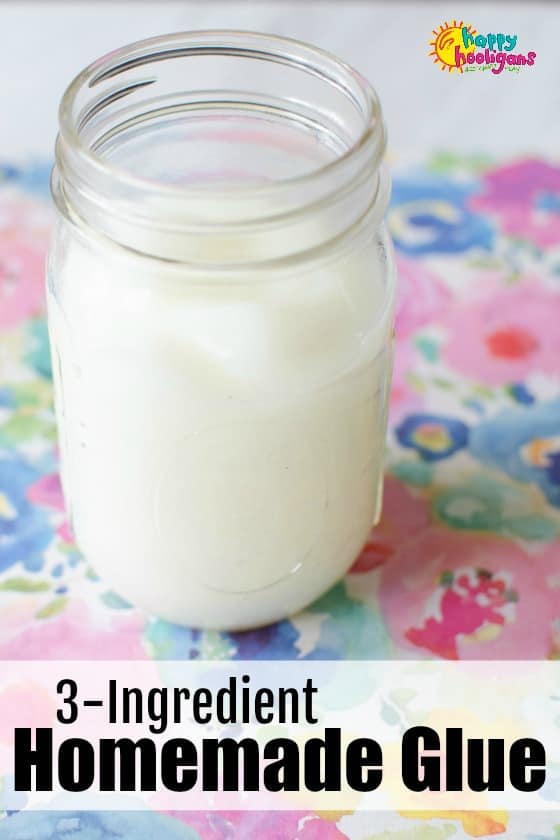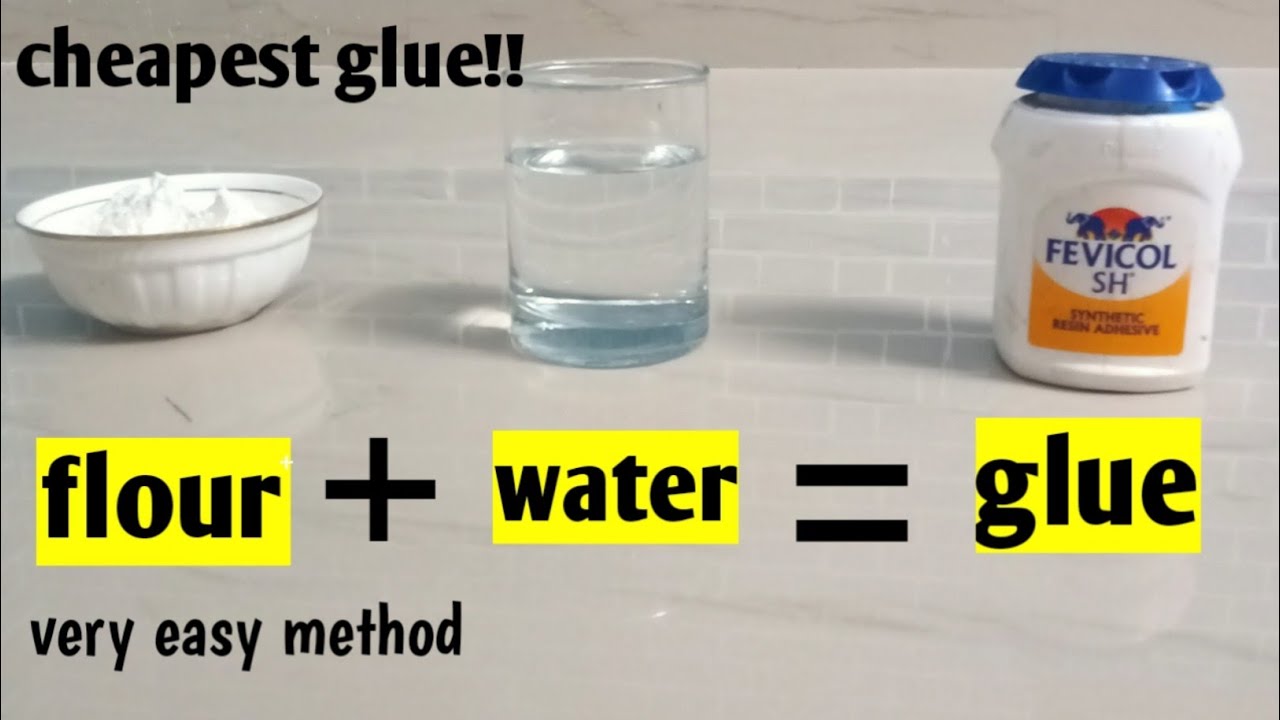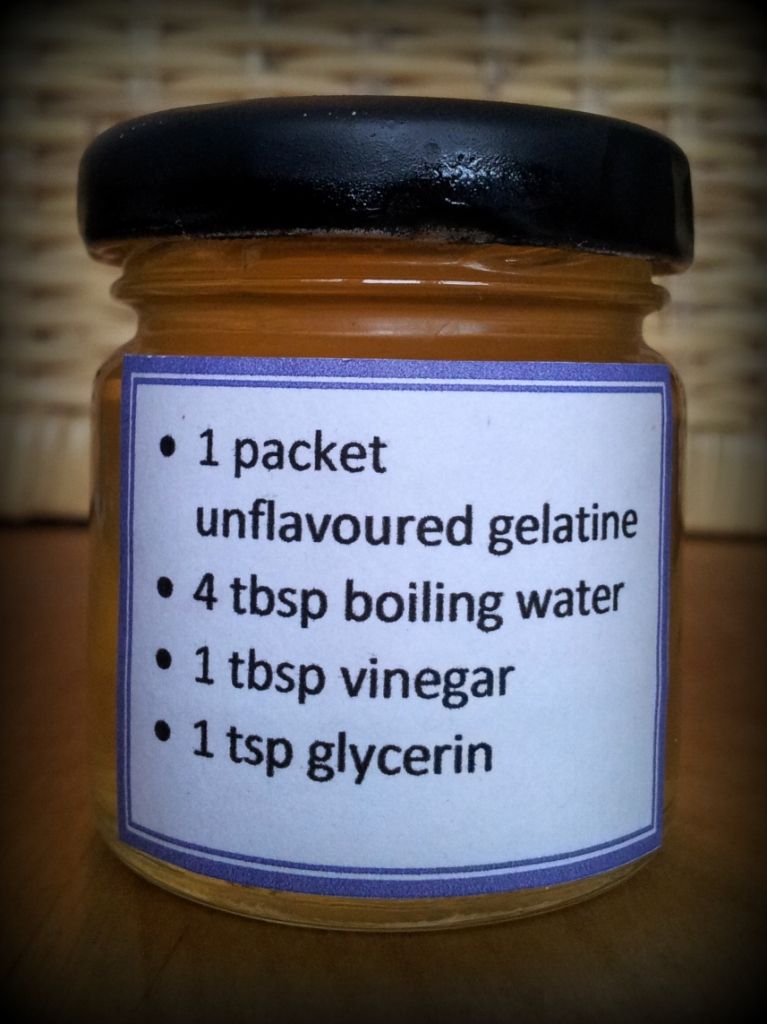Have you ever found yourself in the middle of a craft project only to realize you’ve run out of glue? Or perhaps you're just looking for a more natural and cost-effective alternative to store-bought options? Well, you're in luck! DIY homemade glue recipes are not just a fun science experiment; they can also be incredibly practical. In this blog post, we’ll explore some easy recipes you can whip up in your kitchen, while also discussing the surprising benefits of making your own glue. So, roll up your sleeves and let’s get started!
Benefits of Making Glue at Home

Making glue at home comes with several advantages that can enhance your crafting experience. Here are some key benefits:
- Cost-Effective: Homemade glue generally requires basic kitchen ingredients that you likely already have on hand, such as flour, sugar, and water. This means you can save money compared to buying specialty adhesives from the store.
- Customizable: One of the best parts about DIY glue is that you can tweak the recipes to suit your specific needs. Want a stronger bond for heavier materials? You can experiment with ratios until you get it just right.
- Non-Toxic: Many commercial glues contain harmful chemicals that might be hazardous to your health, especially for children or pets. Homemade glue is often made from natural ingredients, making it a safer option for everyone.
- Environmentally Friendly: Making glue at home reduces waste, as you can use materials that might otherwise get thrown away. Plus, you avoid the plastic packaging that comes with store-bought glue.
- Fun and Educational: Making glue can be an enjoyable project for kids, teaching them about chemical reactions and the properties of materials. It’s a fun way to engage in creative activities while learning science!
Overall, the benefits of crafting your own glue far outweigh the convenience of buying it from the store. So, why not give it a shot?
Common Ingredients for Homemade Glue

Making homemade glue can be a fun and economical way to tackle your crafting and repair needs. Many of the ingredients you need are likely already in your kitchen or pantry! Let’s take a closer look at some common ingredients used in DIY glue recipes:
- Flour: All-purpose flour is a staple ingredient in many homemade glue recipes. It acts as a thickening agent and provides that sticky consistency we all love in glue.
- Water: This is a universal solvent used to mix other ingredients. Depending on the recipe, you might need it in varying quantities to achieve the right glue consistency.
- Sugar: Sugar can enhance the adhesive qualities of homemade glue. It acts as a binding agent and can also help to preserve your glue longer by preventing mold.
- Vinegar: White vinegar is often used in glue recipes for its antibacterial properties. This makes it a great ingredient if you’re concerned about your glue spoiling over time.
- Baking Soda: When combined with vinegar, baking soda can create a more elastic glue. It’s a fun addition that can produce different textures!
- Gelatin: Another powerful binding agent, gelatin can provide a strong, flexible finish, making it ideal for more robust projects.
Using these ingredients, you can easily whip up different types of glue that can cater to all your crafting needs. Plus, it’s a fantastic way to engage your creativity!
Step-by-Step Guide to Making Simple Glue

Ready to jump into some fun DIY? Making your own glue is easier than you think! Here’s a simple step-by-step guide to create your very own all-purpose glue using flour and water.
What You'll Need:
- 1 cup of all-purpose flour
- 1 cup of water
- 1 tablespoon of sugar (optional, for preservation)
- 1 tablespoon of white vinegar (optional, for antibacterial properties)
Instructions:
- Mix Ingredients: In a medium-sized bowl, combine the flour and sugar. Slowly stir in the water until you have a smooth, thick paste.
- Add Vinegar: If you’re using vinegar, add it to the mixture at this point. This will help to keep your glue adhesive for a longer time.
- Cook the Mixture: Transfer the mixture to a saucepan and cook over medium heat. Stir continuously to prevent lumps from forming.
- Thicken It Up: Once the mixture starts to bubble, continue stirring until it thickens to your desired consistency, usually about 2 to 3 minutes.
- Cool Down: Remove the saucepan from heat and let the glue cool. It’ll continue thickening as it cools.
- Store: Once cooled, transfer your glue into a clean jar or airtight container. It can be stored in the refrigerator for a few weeks.
And there you have it! A simple glue that’s perfect for everyday crafts or quick repairs. Give it a try and enjoy the satisfaction of creating your own supplies!
5. Alternative Recipes for Different Types of Glue
When it comes to DIY homemade glue, there are actually several types you can whip up right in your kitchen! Each recipe has its unique properties, making them suitable for various projects. Here are some fabulous alternatives you might want to try:
- Flour Glue: This soft glue is perfect for paper crafts. Simply mix 1 part flour with 2 parts water and a pinch of salt. Heat the mixture over low heat until it thickens. Make sure to let it cool before using!
- Milk Glue (Casein Glue): Made using milk, this glue is great for stronger paper connections. Combine 1 cup of milk with ¼ cup of vinegar. Once you see curds forming, strain and rinse them. Mix the curds with a bit of water until you achieve a smooth consistency.
- DIY Cornstarch Glue: Want something quick and easy? Mix 2 tablespoons of cornstarch with 1 cup of water and boil it until it thickens. Let it cool, and you have a handy, smooth glue that’s non-toxic.
- Gelatin Glue: If you need flexible glue, try this one! Dissolve 2 tablespoons of gelatin in ¼ cup of hot water. Add a teaspoon of vinegar and a dash of glycerin to improve flexibility.
- Sugar Glue: A bit unconventional but quite effective! Mix 2 tablespoons of water with 1 tablespoon of sugar. Heat it until the sugar dissolves, then let it cool. You can use this for basic craft needs.
Experiment with these alternatives and find the one that works best for your specific project. Happy crafting!
6. Tips for Storing Homemade Glue
Now that you have your homemade glue, you’ll want to make sure it stays fresh and effective for as long as possible. Here are some handy storage tips:
- Choose the Right Container: Use airtight containers or jars to store your glue. This helps prevent air from spoiling the glue. Old spice jars or small mason jars work wonders!
- Label and Date: Don’t forget to label your containers with the type of glue and date made. This will help you keep track of its age. Most homemade glues are best used within a few weeks.
- Keep it Cool: Store your glue in a cool and dark place. The pantry or a cabinet away from heat sources like ovens or stoves is ideal.
- Refrigeration Tip: Some glue recipes, especially those made with milk, should be refrigerated. This extends their shelf life significantly. Just remember to take them out and let them warm up a bit before using!
- Watch for Signs of Spoilage: If you notice an odd smell, color change, or lumps in your glue, it’s time to toss it. Always prioritize safety!
Following these tips will ensure that your homemade glues are ready to use whenever you need them, making your crafting experience even more enjoyable!
DIY Homemade Glue Recipes You Can Try
Are you looking for an eco-friendly and cost-effective alternative to commercial adhesives? Making your own glue at home can be both fun and practical. Below are some easy and effective DIY glue recipes that you can try using common household ingredients.
1. Flour and Water Glue
This classic glue recipe is perfect for paper crafts and simple projects.
- Ingredients:
- 1 cup all-purpose flour
- 1 cup water
- Instructions:
- In a saucepan, mix the flour and water until smooth.
- Heat over low heat, stirring constantly until it thickens.
- Cool the mixture before using.
2. Sugar Glue
This recipe is great for children’s crafts and is straightforward to make.
- Ingredients:
- 1 cup sugar
- 1/3 cup water
- Instructions:
- Combine sugar and water in a small saucepan.
- Heat while stirring until the sugar dissolves completely.
- Let it cool, then use as needed.
3. Cornstarch Glue
This is a fantastic option for lightweight projects.
- Ingredients:
- 1 cup water
- 2 tablespoons cornstarch
- 1 tablespoon vinegar
- Instructions:
- In a saucepan, mix water and cornstarch until smooth.
- Add vinegar and cook over medium heat until it thickens.
- Cool before applying.
4. Gelatin Glue
This glue is particularly effective for wood and heavier materials.
- Ingredients:
- 1 tablespoon gelatin
- 1/4 cup water
- 1 tablespoon vinegar
- 1 tablespoon glycerin
- Instructions:
- Soak gelatin in water for a few minutes.
- Heat gently and stir in vinegar and glycerin until smooth.
- Allow to cool and store in an airtight container.
With these easy recipes, you can create your own glue that is not only safe for the environment but also easy on your wallet. Whether you're crafting with kids or tackling DIY projects at home, these homemade glue recipes will help you stick things together effortlessly.
Conclusion
Creating your own glue at home can be an enjoyable and resourceful activity. Not only do these homemade variants save you money, but they also allow you to control the ingredients, ensuring they are safe and non-toxic.
 admin
admin








